This is supposed to be the beginning of the rainy season. Normally, this means sunny mornings and a few hours of rain in the afternoon (sometimes real deluges) in the afternoon. But normally doesn’t exist here anymore.
“We have never had overcast mornings until a couple of years ago. Now I feel like I am back in Europe. Why did I even leave?” – “Days that it is raining from morning on have been pretty rare in the past.” – “Flooding in Costa Rica prompts evacuation of more than 450 people.” – “Normally, it should have rained consistently in June. But in the last two weeks we haven’t seen a drop of rain, and the plants are starting to feel it.”
These are all sentiments I have heard in the last 2 weeks. On one side of the country, the heavy rains cause floods and landslides blocking roads. Behind the mountains, coffee farms are baking in the sun. In the last three days, I have noticed temperature fluctuations of more than 10 degrees. And particularly when we visited a coffee farm today, the impact on local livelihoods is ever-present.
“The climate is driving us crazy. Everything is different. You can’t rely on anything,” says our guide and general manager of the cooperative we are visiting, Roberto Mara from Coopedota. Let me list some of the examples that he pointed to…
“Do you see the two different sizes of coffee cherries? For some reason, we don’t understand why, the plant flowered at different points in time and now has a vast variety of size and ripeness of cherries. Not only does this make it harder and more time-intensive to harvest, it also puts extra stress on the plant that has to feed nutrients to its fruit much longer. Normally, after the cherries are ripe it would store nutrients for recovery and preparation for the next growth season. You mark my words, this plant will be a disaster next year.”
“There is even a ripe cherry here. And see that bush? A branch with a flower and good-sized cherries at the same time. It’s madness.”
“We have figured out that renovating our coffee plantations by replacing old bushes with new ones can be helpful. It’s easier for young plants to adapt to these new conditions; the older ones falter. You just can’t teach an old dog new tricks. Before, newly planted bushes would take 3 to 4 years before bearing fruit, but now we have seen them do it after as little time as 1 year. So the higher temperatures bring constant surprises.”
“We are now experimenting with new varieties that are more resistant to heat and to coffee rust, for which conditions right now (sunny, windy and dry) are just perfect. But the varieties on offer often have robusta genetical traits. We are defined as high-quality, 100% arabica coffee with a specific taste. If we lose that characteristic, we might as well go out of business, because we can’t compete with the quantity that Brazil or Vietnam are churning out.”
“Normally, we produce between 1500 and 1800 meters. Now, because of the heat, farmers are moving up all the way to 2000 meters. The elevation is responsible for coffee acidity, one of the main quality characteristics of specialty coffee. Now it’s a real gamble at which elevation you will get the traits you are looking for.”
“Two bushes from the same variety, next to each other, with the exact same treatment, will behave totally differently. It is really difficult to give our producers advice on what to do because we can’t predict results on their farms.”
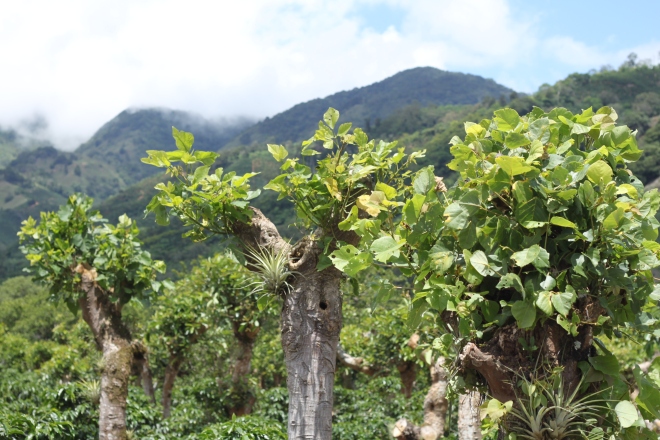
“We started using more shade trees, but even this practice depends on weather patterns. If it rains more, too much shade seriously decreases yield and growth, particularly in small plants. In this plantation, with this sun, it ended up working well with the amount of shade we have, but if we had the usual rain, it might be a struggle.”
“In the experimental plot with our new plants, we ended up cutting all the trees down because we expected rain and didn’t want to jeopardize growth. Had we known…” [He sighs].
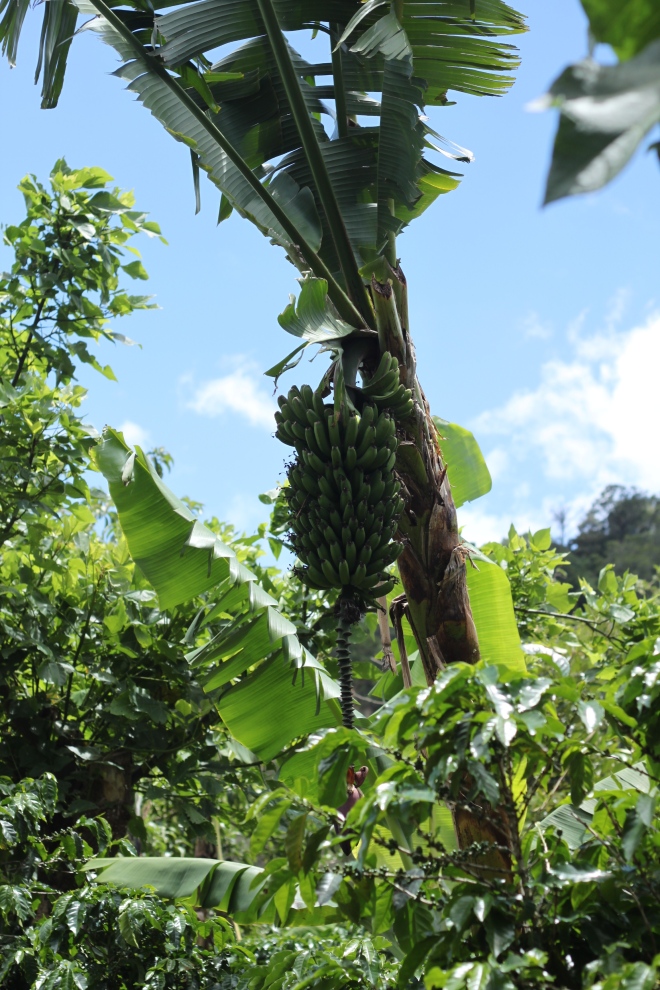
“Now we will probably plant some banana trees because their leaves develop very quickly and can provide shade cover rapidly. The poros, the nitrogen-fixing trees we just cut down, will take a while to recover.”
Can you imagine how it is to live off the land and weather, year to year, and suddenly and quickly realize that many of the rules of thumb passed down from your ancestors are without value? Worse, can you imagine that even science and research can only help in limited ways since experimental results cannot be guaranteed to be replicated? Can you imagine that a sunny day that is supposed to be rainy is not a cause of joy like for us office workers, but rather another day that threatens your existence?
It’s easy to talk about climate change’s impacts on agriculture in an abstract way, but seeing the exasperation in the eyes of those trying desperately to adapt in time truly brings the message home.
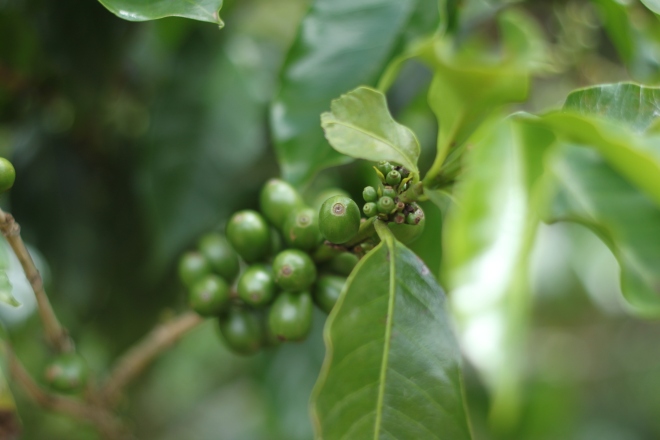
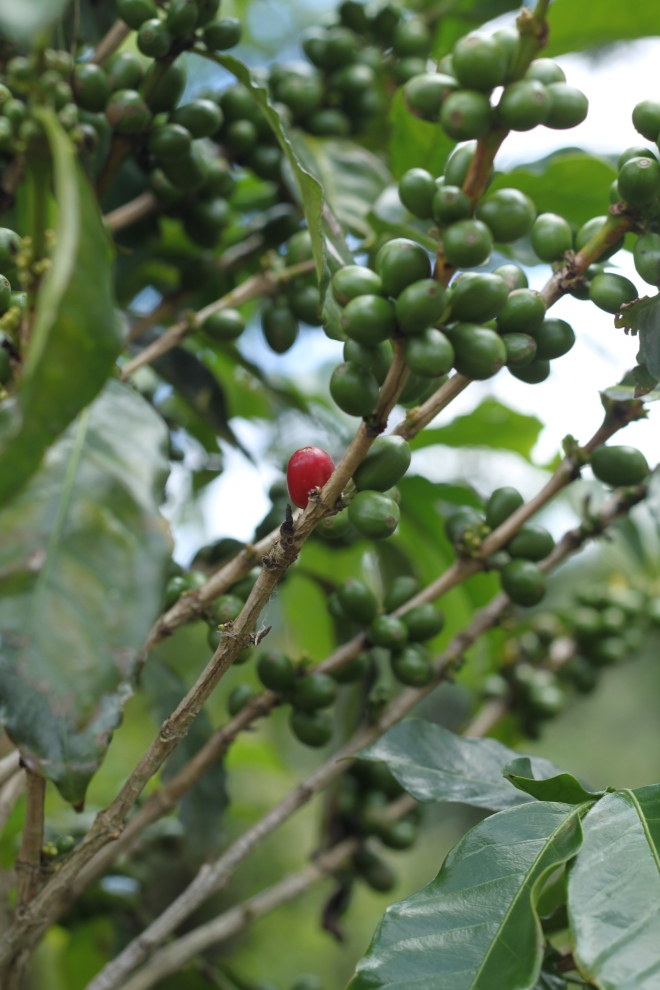
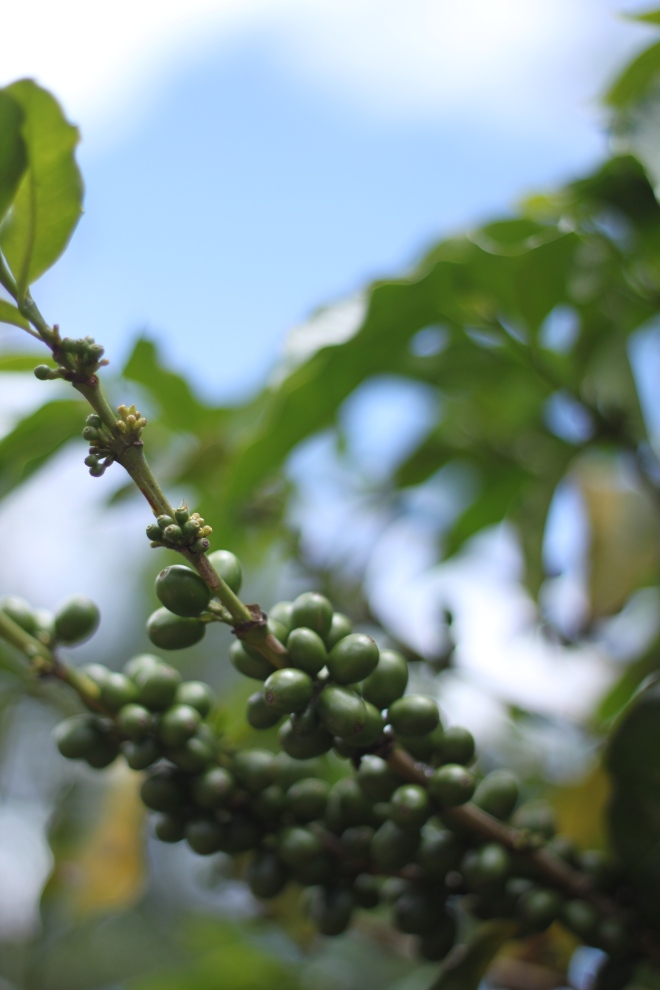
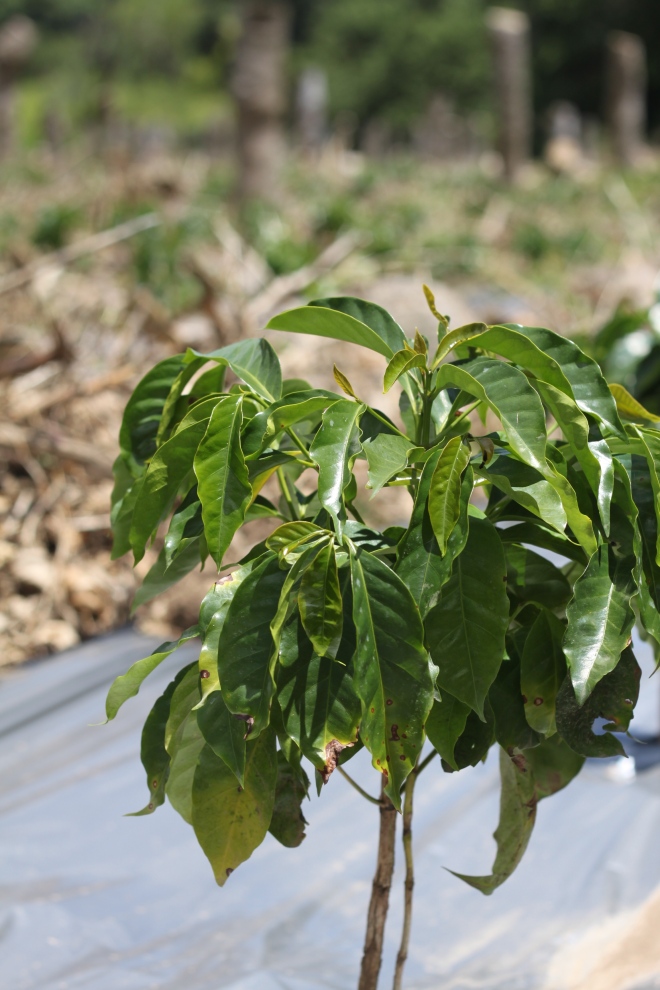

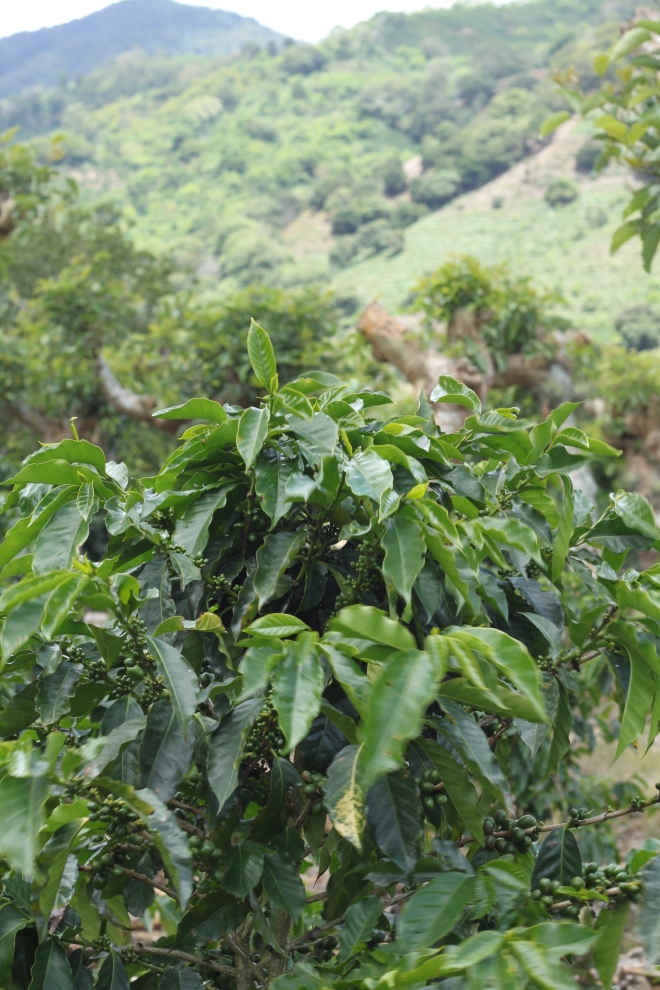
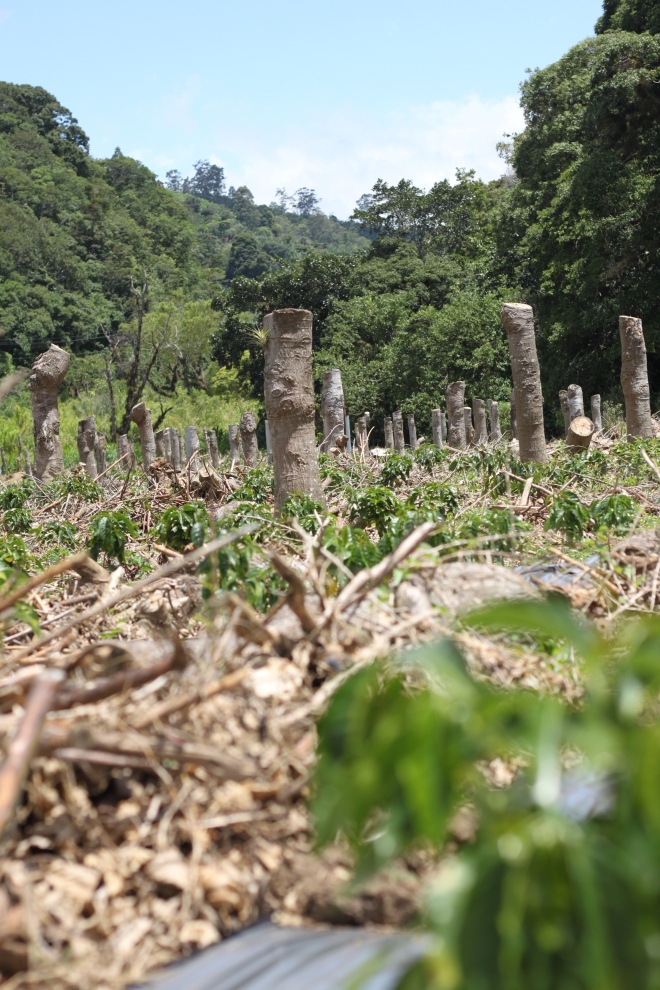
I visited coffee farms in Uganda, where this practice of mixing coffee trees and banana trees was pretty much widespread indeed.
Very nice blog, Janina! Thanks and all the best!
Aww thanks! Say hi from me to everybody in the office!!